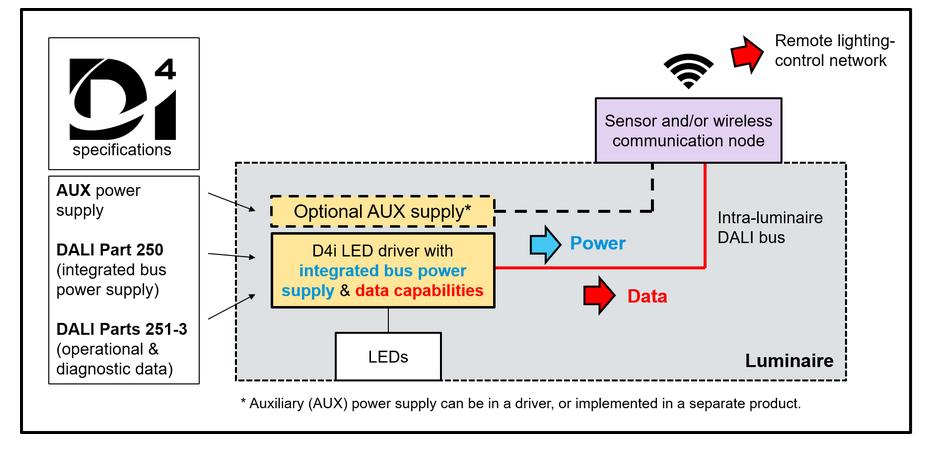DALI-2 and D4i
D4i is defined as an extension of the DALI-2 standard, created to facilitate connectivity between the devices comprising street lighting. It enhances the ability to monitor and take action on a driver, providing new options for introducing a widely-used standard such as DALI (Digital Addressable Lighting Interface) in the IoT (Internet of Things) sector.
The starting point for DALI-2 is its predecessor, DALI which, until recently, had established itself as the most widely-used digital communications interface in the lighting sector, both for programming drivers and for reporting their basic information (detecting faults, programming and reading settings, reading the dimming level, etc.). The industrial sector has also seen how it has had to adapt itself to new emerging technologies, such as the IoT or Industry 4.0, where the monitoring of basic variables relating to energy consumption or device connectivity are starting to take on a primary role.
As a result of all the above, the new D4i standard aims to respond to these needs, offering new memory banks designed to monitor energy consumption and undertake system diagnostics (DALI Part 251, DALI Part 252 and DALI Part 253), as well as incorporate an external power source to supply IoT devices (DALI Part 250 and AUX).


In short, DALI-2 can be defined as a standard protocol, commonly used in the lighting sector, which extends this standardisation towards external and secondary components such as lighting sensors, presence detectors and other devices. This allows greater functionality to be incorporated into the overall lighting system, optimising energy consumption and simply and intuitively adjusting the light depending on the needs set down by the user.
DALI-2 and remote management
This last point reminds us of the need to standardise a socket or physical support in order to create wireless connectivity. Using photocell footprints, commonly used in the street lighting sector to control when to turn street lights on and off in cities, the NEMA ANSI C136.41 standard would open the door to connectivity, by reutilising the same socket that has been used to date. However, these systems have their own power supply, which complicates the design and increases the costs of the device. They are moreover designed to work with interfaces that are already on the market, such as DALI, or even analogue interfaces such as 0-10V and 1-10V.
The D4i concept goes one step further. The control of energy consumption, monitoring critical variables and in short, the “intelligence” of the system which, among other factors, allows the light flow to be regulated, is all contained in the driver itself. Thanks to this external auxiliary power supply offered by the driver, designed to work with an output voltage of 24V, the luminaire, as a complete, interconnected system, is able to act as a communications bridge to a remote and wireless street lighting management system, using a standard communications interface such as DALI-2.
To continue to move closer to this concept of standardisation, D4i has selected the ZHAGA (Book 18) standard as the ideal physical support for interconnecting street lighting. With just 4 pins (Power supply, DALI+, GND and a pin that enables the input-output connection to a sensor) and a reduced-size footprint as it does not have its own power supply, it will come as no surprise to see this solution, which is standard in every sense of the word, making waves in the market in the coming years.


Miguel Sousa
ELT Smart Systems Division

